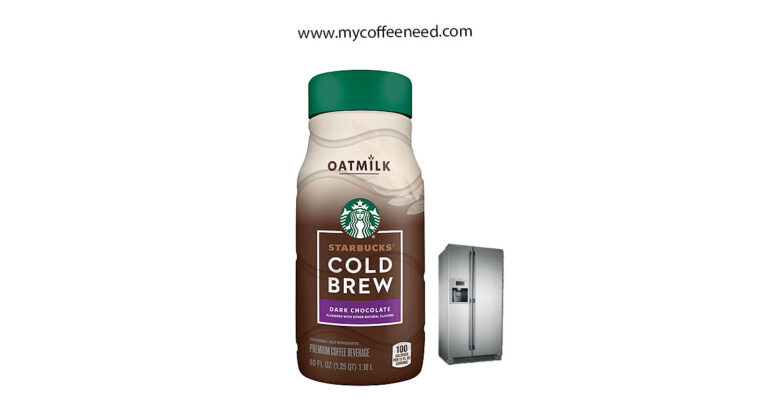How Much Ground Coffee for 4 Cups?
Brewing the perfect cup of coffee, determining how much ground coffee for 4 cups can seem a bit daunting. The amount you need will vary, and it’s not just about simple measurements.
It’s about understanding the factors that play a significant role in influencing the taste, strength, and quality of your coffee. Keep connected with us to stay in the know! We’re here to keep you informed and answer your questions on a wide range of topics.
Types of Coffee Maker
Different coffee makers require different ratios of ground coffee to water. Whether it’s a drip coffee maker, espresso machine, or French press, each method has its unique demands. For example, using a drip coffee maker might require a different amount of coffee grounds than making cold brew coffee. Knowing the specific needs of your coffee maker is the first step towards a delicious cup of coffee.
Your Personal Preferences
Personal taste plays a vital role in determining how much ground coffee you need for 4 cups. If you prefer a stronger coffee, you may want to add more grams of coffee, whereas a milder taste may require fewer tablespoons of ground coffee. Your taste buds are the ultimate guide in this aspect, making personal preference a crucial factor in achieving the best flavor.
Strength of Coffee You Like
The desired strength of your coffee can greatly influence the amount of coffee grounds required. The ideal ratio of coffee to water, known by some as the “golden ratio,” can vary from one person to another. Whether you like your coffee bold and robust or light and mild, understanding your preferred brew ratio and grind size will guide you towards the right amount of coffee for your favorite mug.
In summary, the journey towards the best cup of coffee involves understanding various factors, including the type of coffee maker, personal preference, and desired strength. There’s no standard ratio or fixed grams of ground coffee that fits all; it’s about experimenting and finding the perfect balance that suits your unique needs and taste. A good starting point is to follow the general guideline provided by your coffee maker or the Specialty Coffee Association of America, and then tweak as needed to achieve the most satisfying result.
Quest for the Perfect Cup of Coffee
Coffee, a beloved beverage enjoyed by many across the globe, often starts our day and fuels our moments of relaxation. But brewing the perfect cup of coffee can feel like a pursuit shrouded in mystery. How much ground coffee for 4 cups? What’s the ideal coffee-to-water ratio? Should you use whole bean coffee or pre-ground coffee? These questions, and more, may arise as you stand before your coffee maker, coffee scoop in hand, ready to begin the brewing process.
The answer isn’t as simple as a fixed number of tablespoons of coffee grounds or grams of water. It’s an art that involves understanding the type of coffee you like, the machine you are using, and even the quality of your coffee beans. Finding the right balance can lead to the best cup of coffee, filled with rich flavors and aromas that delight your taste buds.
|
Coffee grounds (g) | Tablespoons | |
|---|---|---|---|
| 1 | 8.3 | 1.6 | |
| 5 | 41.5 | 8 | |
| 6 | 49.8 | 9.6 | |
| 8 | 66.4 | 12.8 | |
| 10 | 83 | 16 | |
| 12 | 99.6 | 18.2 |
The Golden Ratio
In the world of coffee brewing, one term that often surfaces is the “Golden Ratio.” This ideal coffee-to-water ratio holds the key to unlocking the delicious potential within coffee beans. Here’s how it plays out:
The Golden Ratio is a widely accepted starting point for many coffee enthusiasts and professionals alike. It’s a 1:18 ratio of coffee to water, meaning for every gram of coffee, you’ll use 18 grams of water. This standard ratio is recommended by organizations like the Specialty Coffee Association of America and is considered a good starting point for achieving a balanced and delightful cup of coffee. Your personal taste might lead you to tweak this ratio, but it’s a reliable guide for consistent results.
For 4 cups of coffee, this would translate to 33.2 grams of coffee grounds for 600 milliliters of water.
Want to make 4 cups of coffee? The Golden Ratio makes it easy. Using the 1:18 ratio, you would need 33.2 grams of coffee grounds for 600 milliliters of water. This conversion takes into account that a standard cup is about 150 milliliters, leading to a precise measurement for 4 cups. Utilizing a kitchen scale can aid in accurate measurements, ensuring the best taste. Remember, this is a general guideline, and adjusting the grams of coffee or amount of water to match your desired strength or flavor is part of the joy of brewing the perfect coffee.
Embracing the Golden Ratio as your guide opens doors to a perfect balance between the coffee grounds and water, offering a delightful experience for your taste buds. It’s a versatile standard that caters to different methods, whether using a coffee pot, pour-over coffee, or French presses, and serves as a solid foundation upon which you can build your coffee mastery.
Personal Preference
While there are general guidelines and ratios to guide you in brewing the perfect cup of coffee, there’s an element that’s uniquely yours: personal preference. Your taste buds have their own voice, and they play a pivotal role in determining how much ground coffee you need for your desired flavor and strength. Here’s how your personal preference might influence your coffee-making process:
Amount of ground coffee
You use will also depend on your personal preference. Your personal taste is a critical factor in determining the right amount of coffee grounds. While the Golden Ratio provides a general guideline, your ideal ratio of ground coffee to water may differ. You might enjoy a richer flavor or a more subtle taste, and that requires adjusting the grams of coffee or tablespoons of coffee grounds to suit your liking. Finding the perfect balance is a journey of exploration and experimentation, but it leads to a cup of coffee tailored to your taste buds.
If you like your coffee strong, you may want to use more coffee grounds. For those who crave a bold, robust flavor, adding more coffee grounds is the way to a stronger coffee. By increasing the ratio of coffee to water, you intensify the flavor and body of the coffee. It might involve using more than 33.2 grams of coffee for 4 cups, for instance. Your coffee scoop becomes a tool for crafting a beverage that resonates with your desire for a rich and potent coffee experience.
If you like your coffee weaker, you may want to use less coffee grounds. Perhaps you prefer a gentler, lighter taste in your coffee. In that case, using fewer coffee grounds can create a weaker coffee that’s still full of flavor but without the bold intensity. Reducing the amount of ground coffee while maintaining the same amount of water softens the taste, allowing for a more delicate and soothing coffee experience. This approach gives you the flexibility to create a beverage that’s as unique and individual as your preferences.
Other factors to consider
When it comes to brewing coffee, knowing how much ground coffee for 4 cups isn’t just about measuring the right grams or following a specific ratio. Several underlying factors contribute to the taste, aroma, and strength of your coffee. Understanding these elements can lead to a more refined coffee experience, one that’s tailored to your preferences. Let’s explore some of these crucial factors:
Types of Coffee Beans
You use will also affect the amount of ground coffee you need. The choice of coffee beans is more than a matter of flavor; it’s about the quality of your coffee. Different beans have varying characteristics and flavors, affecting the amount of ground coffee required. Single-origin beans or specialty coffee might demand precise measurements to bring out their unique notes. Experimenting with different types of beans, whether whole bean coffee or pre-ground coffee, can guide you in finding the best cup of coffee that fits your taste.
Darker roasts
Dark roasts will be stronger than lighter roasts, so you may need to use less coffee grounds with darker roasts. Roast levels play a vital role in the strength and flavor profile of your coffee. Darker roasts are typically bolder and more robust, leading to stronger coffee. If you prefer a strong flavor, you might find that using less coffee grounds with darker roasts achieves the desired strength. Conversely, lighter roasts may require more coffee grounds to reach the flavor intensity you crave. Understanding this aspect helps you tweak the amount of ground coffee to align with your chosen roast.
Grind Size
The grind size of your coffee beans will also affect the amount of ground coffee you need. The grind size is a significant factor in determining the taste and strength of your coffee. A finer grind exposes more surface area to water, extracting more flavor and leading to a stronger cup of coffee. Consequently, you may need to use less coffee grounds with a finer grind. On the other hand, a coarser grind might require more ground coffee to achieve the same strength. Whether using a burr grinder or buying pre-ground coffee, the grind size requires attention to detail and possibly adjustments to the standard ratio to attain the perfect balance.
A finer grind will produce a stronger cup of coffee, so you may need to use less coffee grounds with a finer grind. The power of the finer grind lies in its ability to extract more flavor, allowing you to use less ground coffee while still achieving a bold taste. Whether it’s for espresso machine use or other brewing methods, understanding the grind size and its impact on strength and flavor can lead to delicious coffee that’s tailored to your preferences.
In the quest for the perfect coffee, these factors weave together, creating a rich tapestry of taste, aroma, and pleasure. From the type of beans to the roast and grind size, these elements shape your coffee experience, guiding you towards the right amount of coffee and the best results that satisfy your coffee-loving soul.
How to Measure Ground Coffee?
Now that you have a deeper understanding of the factors influencing how much ground coffee you need, the question arises: How do you measure ground coffee accurately? Whether you’re aiming for the Golden Ratio or adjusting based on your taste preferences, measuring ground coffee can be done in various ways. It’s not just about knowing how many grams of coffee or tablespoons of coffee grounds you need; it’s about applying the method that suits your needs and helps you brew that delicious cup of coffee.
There are a few different ways to measure ground coffee. Measuring ground coffee doesn’t have to be a daunting task. Different methods cater to different needs, and finding the one that aligns with your coffee-making process enhances your brewing experience. Whether you prefer accuracy or convenience, there’s a way to measure ground coffee that works for you. You can use a kitchen scale, a measuring spoon, or a coffee scoop. let’s explore more:
Kitchen Scale: If precision is your goal, a kitchen scale, possibly a digital scale, is your best ally. By measuring the grams of ground coffee, you can follow the ideal coffee-to-water ratio or make fine adjustments to suit your taste. A scale ensures consistent results and is especially useful for those who appreciate the science behind a perfect coffee.
Measuring Spoon: For those who prefer a more straightforward approach without compromising on quality, a measuring spoon is a great option. Level tablespoons or parts of coffee can be measured easily, and it’s a convenient tool available in most kitchens.
Coffee Scoop: Dedicated to coffee lovers, a coffee scoop often comes with coffee makers and is designed to measure the right amount of coffee. While not as precise as a scale, it offers a good starting point and is handy for everyday use.
Each method has its merits, and the choice depends on your preferences and how you approach your coffee brewing. Whether seeking the best flavor through accurate measurements or finding a quick and reliable way with a measuring spoon or coffee scoop, these tools enable you to embrace your coffee-making journey with confidence. They guide you in translating the grams, tablespoons, or scoops of coffee grounds into a delightful beverage that resonates with your palate and warms your soul.
Tips for Brewing the Perfect Cup of Coffee
The pursuit of the perfect cup of coffee is a delightful journey filled with nuances and techniques. It’s not merely about knowing how much ground coffee for 4 cups or following a specific ratio. It’s an art that combines precision, understanding, and a touch of creativity. Here are some expert tips to help you elevate your coffee-making skills and brew a cup of coffee that’s both delicious and soul-satisfying:
Always use fresh, cold water!
Water is the essence of coffee brewing, and its quality directly impacts the flavor of your coffee. Using fresh, cold water ensures a clean and clear taste, allowing the coffee’s unique characteristics to shine through. Avoid using hot water or water that has been standing in the coffee pot, as it can negatively affect the taste. Fresh water contributes to the perfect balance and best flavor in your coffee.
Grindn coffee beans just before brewing
The grind size of your coffee beans matters, and so does their freshness. Grinding your coffee beans just before brewing helps preserve the essential oils and flavors that make coffee a beloved beverage. Whether you prefer a finer grind or a coarser grind, using freshly ground beans elevates the quality of your coffee, enhancing the aroma and taste. A burr grinder is an excellent tool for consistent results, turning whole bean coffee into a flavorful experience.
Preheat your coffee maker
The temperature of your coffee maker can significantly affect the brewing process. Preheating your coffee maker, whether it’s a drip coffee maker, French press, or espresso machine, ensures that the water temperature is optimal throughout the brewing process. It helps maintain the ideal coffee-to-water ratio and ensures that every aspect of the coffee is extracted beautifully. A warm coffee maker sets the stage for a great coffee experience.
Use the correct amount of ground coffee
Whether following the Golden Ratio or adjusting to personal preference, using the correct amount of ground coffee is crucial. Accurate measurements, understanding the type of beans, roast, and grind size all contribute to finding the right amount of coffee. This precision guides you to the perfect cup of coffee, where every gram of coffee or tablespoon of coffee grounds plays its part in creating a harmonious and delicious beverage.
Brew your coffee for the correct amount of time.
Brewing time is an essential variable in the coffee-making process. Different brewing methods, such as pour-over coffee or cold brew coffee, require different ratios and brewing times. Understanding the relationship between the brewing time and your chosen method leads to consistent results and the best taste. Too short, and the coffee might be weak; too long, and it might become bitter. Finding the right brewing time is key to a delightful coffee experience.
These tips, when combined with understanding your preferences, tools, and techniques, create a roadmap to the perfect cup of coffee. It’s a journey filled with discovery, refinement, and enjoyment. Every step, from the water quality to the grind, measurements, and brewing time, is a dance that leads to a cup of coffee that’s uniquely yours. Embrace the process, savor the results, and let your coffee-making journey be a source of joy and inspiration.
Conclusion
The art of brewing coffee is an intricate blend of science, artistry, and personal touch. Knowing how much ground coffee for 4 cups is just the beginning. Your journey towards the perfect cup of coffee is shaped by your personal preference, the type of coffee beans you use, the grind size, and many other nuanced factors that breathe life into your coffee experience.
The Golden Ratio offers a general guideline, a good starting point that can be tailored to your tastes and the specific beans and grind size you prefer. With tools ranging from kitchen scales to measuring spoons, and guided by tips that enhance every aspect of the brewing process, you hold the power to create coffee that resonates with your soul and delights your taste buds.
From using fresh, cold water to grinding your beans just before brewing, preheating your coffee maker, and paying attention to the amount and brewing time, every step is an opportunity to refine, experiment, and enjoy. The path to delicious coffee is one filled with discovery and joy, and by embracing these insights and tips, you can brew the perfect cup of coffee every time. So go on, let your coffee adventure begin, and let each cup be a celebration of flavor, aroma, and personal expression.
Use a Burr Grinder to Get a Consistent Grind Size!
The grind size of your coffee beans plays a crucial role in determining the flavor, aroma, and overall quality of your coffee. From a fine grind for espresso to a coarser grind for French presses, the consistency of the grind affects how the water interacts with the coffee during the brewing process. Among the various tools available to achieve this, the burr grinder stands out as a preferred choice for coffee enthusiasts and professionals alike. Here’s why:
The Importance of Consistent Grind Size
A consistent grind size ensures that all the coffee particles are exposed to water evenly, leading to a balanced extraction. Inconsistent grinds can lead to over-extraction in some parts and under-extraction in others, resulting in a cup of coffee that’s both bitter and sour. A consistent grind helps you control the brewing process, whether you’re aiming for a stronger coffee or a milder flavor. It’s the foundation of the perfect coffee, influencing the ratio of coffee to water, the brewing time, and the final taste.
Why Choose a Burr Grinder?
Uniform Grind: Unlike blade grinders, which chop beans inconsistently, burr grinders crush beans between two abrasive surfaces, resulting in a uniform grind. This consistency contributes to a more balanced flavor and aroma.
Versatility: Burr grinders often come with adjustable settings that allow you to choose the grind size according to your brewing method. Whether it’s a finer grind for espresso machines or a medium grind for drip coffee makers, a burr grinder offers the flexibility to match your preference.
Precision: For those seeking the best cup of coffee, precision is key. A burr grinder provides accurate measurements and consistent results, aligning with the Golden Ratio or any specific ratio of ground coffee that you desire.
Quality: Investing in a quality burr grinder enhances the freshness and quality of your coffee. Grinding just before brewing, paired with the burr grinder’s consistency, elevates your coffee experience to new heights.
The burr grinder is more than a tool; it’s a gateway to exploring the delightful intricacies of coffee. From the moment you grind your whole bean coffee to the final sip, the consistent grind size shapes the flavor, texture, and satisfaction of your coffee experience. By understanding and leveraging the advantages of a burr grinder, you take an essential step towards brewing coffee that resonates with your palate, reflects your preferences, and celebrates the rich tapestry of tastes and aromas that coffee offers. It’s not just about how much ground coffee for 4 cups; it’s about making those cups extraordinary, one consistent grind at a time.
Clean Your Coffee Maker Regularly to Prevent Build-up of Coffee Oils and Residues
The coffee-making process is an art that requires attention to details, from knowing how much ground coffee for 4 cups to selecting the right type of beans. However, even with the best ingredients and careful preparation, the flavor and quality of your coffee can be compromised by something often overlooked: the cleanliness of your coffee maker. The build-up of coffee oils and residues can affect the taste and aroma of your coffee, making regular cleaning a vital part of ensuring the best cup of coffee.
Why is Regular Cleaning Important?
Coffee oils, residues, and mineral deposits can accumulate inside your coffee maker over time. This build-up can create a rancid or bitter taste in your coffee, detracting from the delicious flavors you expect. Regular cleaning not only improves the taste but also prolongs the life of your coffee maker, be it a drip coffee maker, espresso machine, or French press. It ensures that the brewing process, water temperature, and flow remain consistent, delivering the best results.
How to Clean Your Coffee Maker?
For Drip Coffee Makers:
- Fill the water reservoir with equal parts water and white vinegar.
- Run the machine through a full brewing cycle.
- Rinse by running it again with just water, repeating if necessary to remove any vinegar smell.
- Wash removable parts like the carafe and filter basket with warm, soapy water.
- Use a soft brush to clean any deposits and wipe down the machine.
For Espresso Machines:
- Use a specialized espresso machine cleaner or a mixture of water and vinegar.
- Run the solution through the machine as per the manufacturer’s instructions.
- Clean the steam wand, filter basket, and other removable parts with warm, soapy water.
- Wipe down the machine with a damp cloth.
For French Presses:
- Dismantle the press and wash all parts with warm, soapy water.
- Use a soft brush to remove any residues.
- Rinse thoroughly to remove all soap.
By maintaining a clean coffee maker, you ensure that every factor, from grind size to water quality, has the opportunity to shine without interference from unwanted residues or build-up. Whether striving for the ideal ratio of coffee, the perfect balance of flavors, or the exact brewing time, a clean coffee maker acts as a faithful companion, ready to help you explore the rich and diverse world of coffee. Make cleaning a regular part of your routine, and let each cup of coffee be a pure, unadulterated celebration of taste and enjoyment.
Store Your Coffee Beans in an Airtight Container in a Cool, Dark Place
Coffee is a symphony of flavors, aromas, and textures. To achieve the perfect cup of coffee, every step, from understanding how much ground coffee for 4 cups to the brewing process, matters. But the journey begins even earlier, with the proper storage of your coffee beans. Preserving the freshness of your coffee beans is essential, and that means storing them in an airtight container, away from light, heat, and moisture. Here’s why:
Protecting the Freshness
Coffee beans are delicate and can easily lose their flavor and aroma. Air, light, and moisture can degrade the quality of your coffee beans, leading to a stale taste. An airtight container prevents air from reaching the beans, while storing in a cool, dark place protects against heat and light. These measures help maintain the oils and flavors that give coffee its distinctive taste.
Preventing Absorption of Odors
Coffee beans can absorb odors from their surroundings. An airtight container helps to keep external smells away from the beans, ensuring that they retain their unique flavor profile.
Controlling Moisture
Moisture can lead to mold and the growth of unwanted microorganisms in your coffee beans. A cool, dark place with an airtight container helps in controlling moisture levels, keeping your beans dry and fresh.
Whole Bean vs Pre-Ground Coffee
If you’re using whole bean coffee, the freshness lasts longer, and the above storage method is even more crucial. Pre-ground coffee loses freshness more quickly, so if you choose to grind your beans ahead of time, use them as soon as possible for the best flavor.
Recommended Storage Methods
- Airtight Container: Specialized coffee containers with airtight seals are available, or you can use any high-quality, airtight container.
- Cool, Dark Place: A pantry or cabinet away from heat sources like ovens or windows is ideal. Avoid storing coffee beans in the fridge or freezer, as they can absorb odors and moisture.
From the moment you select your coffee beans to the final brewing process, each decision shapes the quality of your coffee. Whether exploring different ratios of ground coffee, experimenting with grind sizes, or fine-tuning the water temperature, don’t let all that care and creativity be compromised by improperly stored beans. Embrace the best practices of coffee storage, and let each cup be a fresh, vibrant expression of flavor, body, and aroma. It’s not just about how much ground coffee for 4 cups; it’s about making those cups a celebration of coffee at its finest, starting with the beans themselves.
Different Types of Coffee Beans and Roasts to Find Your Perfect Cup
The journey to the perfect cup of coffee is an exciting adventure filled with endless possibilities. Whether it’s determining how much ground coffee for 4 cups or the ideal water temperature, each aspect contributes to the flavor profile. One of the most thrilling parts of this journey is experimenting with different types of coffee beans and roasts. Coffee is a complex and diverse beverage, and understanding the nuances of beans and roasts allows you to craft a cup that resonates with your taste buds.
Understanding Coffee Beans
There are numerous varieties of coffee beans, but the two most common are Arabica and Robusta. Arabica beans are known for their sweetness, mild flavor, and higher acidity, while Robusta beans are more robust, with a stronger, more bitter taste.
Each variety has its own set of flavor notes, influenced by the growing region, soil, and climate. From fruity Ethiopian beans to earthy Sumatran ones, the world of coffee beans invites you to explore a spectrum of flavors and aromas.
Exploring Coffee Roasts
The roast level is another essential factor that impacts the coffee’s flavor. Here’s a breakdown of the common roast levels:
- Light Roast: Light in color, with a mild flavor, higher acidity, and no oil on the surface. It’s perfect for those who prefer a softer, more nuanced coffee.
- Medium Roast: A balanced flavor profile with more body and less acidity. It’s the “Goldilocks” roast for many coffee lovers.
- Dark Roast: Darker in color with a bold, smoky flavor, and often oily on the surface. Ideal for those who enjoy a strong, rich coffee.
How to Experiment?
Start with a Single Origin: Single origin beans come from one location and allow you to taste the unique characteristics of that region. It’s a great way to explore the variety within the world of coffee beans.
Try Different Roasts: Experiment with different roast levels to discover what resonates with your palate. Whether you prefer the mild flavor of a light roast or the robust richness of a dark roast, there’s a perfect roast for you.
Blend Your Own: Once you understand the flavors you enjoy, you can try blending different beans and roasts to create a customized flavor profile.
Record Your Impressions: Keep a coffee journal to note down your impressions of different beans and roasts. It will help you refine your preferences and create a more personalized coffee experience.
Finding your perfect cup of coffee is a delightful process of exploration, experimentation, and personalization. By understanding the nuances of different beans and roasts, you unlock new dimensions of flavor, aroma, and satisfaction. It’s not merely about knowing how much ground coffee for 4 cups, but also about knowing which beans and roasts make those 4 cups uniquely yours. Embrace the adventure, and let your coffee journey be a sensorial exploration that leads you to your perfect cup, one taste at a time.







